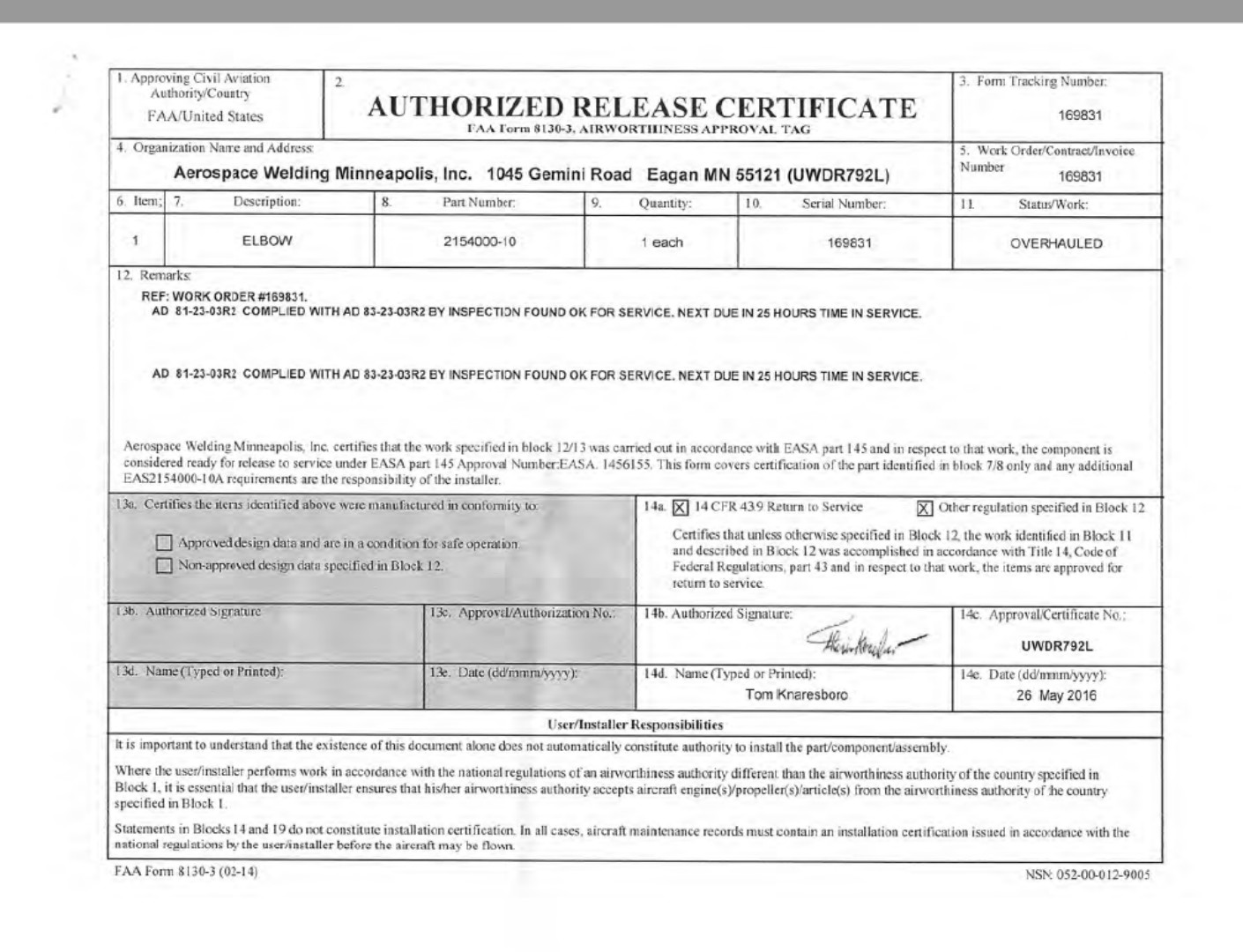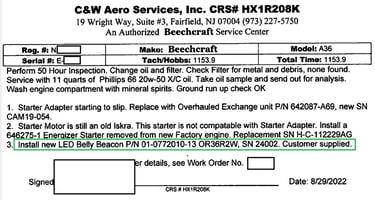Why are your logbooks so valuable, and how should they be cared for and treated?
FAA Form 8130s Are Valuable Too!

One question we often get from our clients is, "Do I really need to keep all this old documentation? What about for parts that aren't on the aircraft anymore?" The answer is yes and it is recommended, respectively, and for a few reasons.
In this post, we will focus on the simple FAA Form 8130-3 ("8130"). It's a single page document that approves or certifies the part in question to be fit for return to service and/or meets conformity requirements for airworthiness**. This also allows for traceability of the part. Typically, 8130s are issued on overhauled parts, such as brakes, propellers, and engines. Only authorized entities (like a Certified Repair Station or CRS) may issue them (so not necessarily your average shop).
For Part 91 operators (which is most of us), 8130s on their own may not seem very important. But the reason they are critical is because they may shed light on a part that is otherwise unknown. For example, the 8130 can quickly tell you the serial number of the part, which may help you determine applicability on an AD, and could otherwise be challenging to find. It also can help you understand time or cycles put on the part because you know it's overhaul date. When you get into the Part 121/135 space, that last piece is critical and big reason why 8130s are so important. (Hint: you never know who will buy your Part 91 airplane! A prospective Part 135 buyer who wishes to convert your Part 91 airplane will have an easier and less expensive task ahead of them if the documentation is complete.)
In the example above, we show a real 8130 that includes information about AD compliance. The AD in question is 81-23-03 R2 and pertains to replacing any cracked exhaust system components. In this example, we can see they overhauled the elbow. While unusual, it makes sense that the AD compliance is referenced within the 8130 because it is the reason the part was overhauled - to comply with this AD. But what if that same sentence is not repeated in the logbook entry itself? Then you have only one place to prove the compliance with the AD, the 8130.
So why hold onto documentation for parts you know are no longer in the plane, such as avionics like transponders? There is primarily one reason: for the sake of completeness when presenting the records to the next buyer. While the originator of the 8130 is obligated to reproduce the 8130 for 10 years for critical parts, and no less than 5 years for products and articles*, the operator of the aircraft is only required to retain records for up to 2 years. Even though we only need to retain records for up to 2 years for the FAA, we always retain all logbook records going back to the date of manufacture for the sake of completeness, history, and ease of research.
Recommended reading for more details about 8130s:



